Indian carnation: growing and breeding conditions
Indian carnations can be the best decoration for your garden, they will look great on the windowsill. Tabernemontana is an evergreen tropical plant that is especially irresistible during flowering. The appearance of buds can be achieved in winter, if the temperature regime is observed, the plant can bloom even at an unusual time for this. What attracts the Indian carnation of indoor florists?
Content:
- The appearance of an Indian carnation
- Rules for growing Indian carnations
- Reproduction and transplantation of Indian cloves
- Diseases and growth problems of Indian cloves
The appearance of an Indian carnation
Tabernemontana is a small tropical evergreen shrub with beautiful glossy dark green leaves.
Features of the plant:
- It is found naturally in South America, it grows in Austria, Australia, and it can also be found in Africa.
- The flowers are white, they are collected in inflorescences, which can contain up to ten buds.
- Usually 2-3 of them bloom at the same time, so the flowering time lasts long enough.
- The buds have 5 petals, at the very beginning of flowering they have a pronounced pleasant aroma.
This plant has several types, but not all of them are grown at home.
In home floriculture, the most common was spreading tabernemontana, which got its name from the side shoots sticking out to the sides, at the ends of which large buds appear. The most common has become terry variety Flore Pleno, which attracts flower growers with its particularly beautiful flowering.
One of the rare species is Holst's tabernemontana, which is a bush up to one and a half meters high. It differs not only in its large size, but also in the unusual shape of elongated and curved petals, which give the flower an unusual appearance. Another rare variety is the tabernemontana sanango - a large plant with large leaves, the diameter of which can reach 30 cm.
Growing Indian cloves not particularly difficultand this unusual plant can be the gem of any home greenhouse.
Rules for growing Indian carnations
Beautiful abundant flowering can be achieved by providing the plant with good conditions. This is not always easy to do in an apartment, but if you try, tabernemontana will repay you with gorgeous flowers that will delight you for many weeks. To achieve this, the following rules must be followed:
Tabernemontana is a light-loving plant that is best placed on east and west windows. If the Indian carnation is constantly in the shade, it will bloom very rarely.
Observance of the temperature regime is necessary:
- The plant tolerates summer heat calmly, and in winter the room should not be colder than 18-20 degrees.
- A tropical guest does not tolerate a cold snap, in addition, the plant needs constantly humid air.
In addition to regular watering, it will need to be sprayed periodically:
- In winter, tabernemontana requires limited watering, in summer it should not be overfilled either: before watering, you need to make sure that the topsoil is completely dry.
- Indian cloves need a drainage layer at the bottom of the pot, as moisture should not stagnate in the soil.
During the growing period, tabernemontana is fed with a complex fertilizer for flowering plants, which can be found in specialized stores. The best soil composition is peat, sand, turf earth and humus, the soil should be slightly acidic.
One of the most time-consuming rules of care is that tabermontana needs to be transplanted several times a year in the first years of life.
She quickly forms a branched root system, so she needs a lot of space. You do not need to prune it, a bush of the correct shape is usually formed naturally. Only old plants are rejuvenated by removing dying branches, opening up space for young shoots to grow.
Reproduction and transplantation of Indian cloves
For reproduction, you can use both semi-lignified cuttings and seeds, the second option is more often chosen for breeding purposes. Vegetative propagation is easier and more suitable for beginner growers.
Plant propagation:
- It is imperative to wash off the milky juice from the cuttings: it is poisonous, so care must be taken when working with cuttings.
- The cut stalk is immersed in water, and you need to wait for the emergence of a branched system of roots that look like a washcloth.
- After that, it will be ready for first transfer into the substrate.
- If the roots are already developed, no problems with survival usually arise, and the tabernemontana can bloom in the first year after transplantation.
The seeds are planted in slightly damp soil: waterlogging can lead to fungal diseases, so they do not need to be soaked beforehand.
The first shoots appear in about 4-14 days, the emerged seedlings need to be transplanted after they have the first true leaves.
Diseases and growth problems of Indian cloves
Although this quite unpretentious plant, you can face several unpleasant diseases that arise for different reasons:
- If the buds quickly fall off, not having time to truly open, then it indicates that the plant does not have enough strength for full flowering. It needs feeding, and if there are too many buds, some of them need to be removed.
- The leaves begin to turn yellow. This most often indicates that the plant is affected by chlorosis. When transplanting, you need to use a slightly acidic substrate, in addition, the leaves of the plants must be treated with a solution containing trace elements.
- A white bloom appears on the leaves, often on the back. This is a sign of the appearance of a spider mite, which can be eliminated with the help of a special tool.
- If holes begin to appear on the leaf blades, this indicates excessive watering or that the air is too humid. Most often, these are holes in the leaves that appear when a plant is rooting in a greenhouse.
- White specks that can appear on the underside of the leaf are often mistaken for pests, but this is quite normal. It is due to the fact that the milky juice comes out to the surface of the tubules and gradually dries up on them.
The Indian carnation as a whole is a completely unpretentious plant, which even an inexperienced florist can cope with growing.
It is only important to observe basic principles of contentnecessary for a tropical plant, and it will delight you with magnificent flowering for many years.
More information can be found in the video.



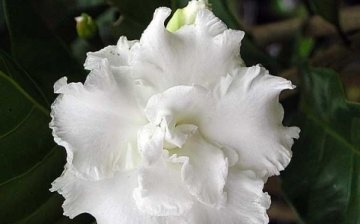
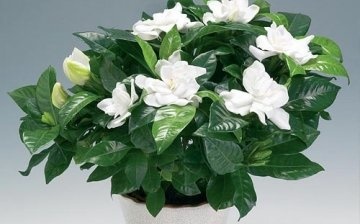
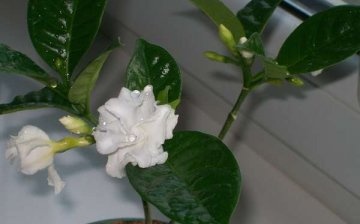
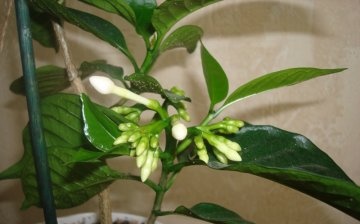
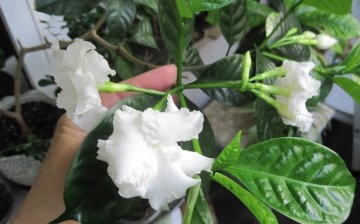





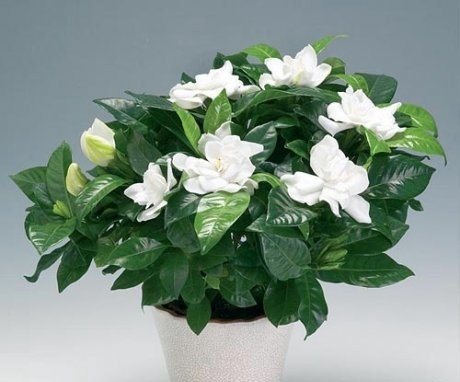
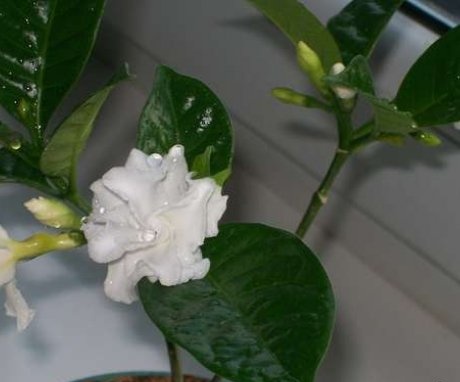
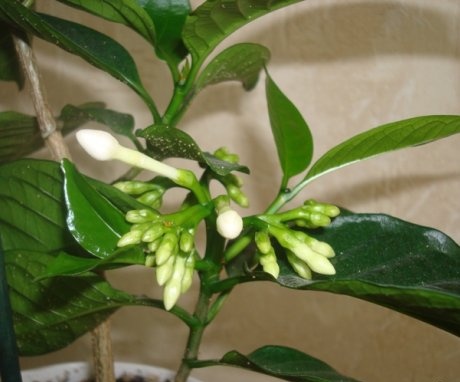

I threw out the plant 2 times without knowing its features - a kind of discharge on the back of the leaf.Having decided that the plant was sick, I fought and fought to no avail, and then I just got rid of the unfamiliar problem.